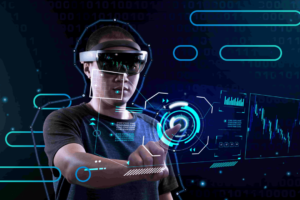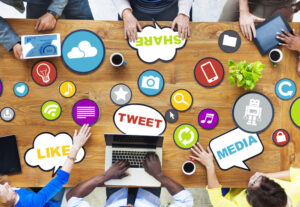In today’s fast-paced world, technology is reshaping every aspect of our lives, particularly how we work and play. From remote working tools that facilitate collaboration to immersive gaming experiences that transport us to new worlds, technology has fundamentally altered our routines and interactions. This article explores the significant ways technology is changing the way we work and play, highlighting both the benefits and challenges it presents.
1. Remote Work Revolution
The rise of remote work is one of the most profound changes brought about by technology. With the advent of high-speed internet, cloud computing, and collaboration tools like Zoom, Slack, and Microsoft Teams, employees can now work from anywhere. This shift has led to increased flexibility, allowing individuals to create work-life balance that suits their needs.
Benefits of Remote Work
- Increased Productivity: Many studies indicate that remote workers tend to be more productive. The absence of office distractions, coupled with the ability to create a personalized work environment, allows individuals to focus better on their tasks.
- Cost Savings: Both employees and employers can save money. Employees save on commuting costs and time, while employers can reduce overhead expenses related to office space and utilities.
- Access to Global Talent: Companies are no longer limited to hiring local talent. They can access a broader pool of candidates from around the world, leading to greater diversity and innovative ideas.
Challenges of Remote Work
However, remote work is not without its challenges. Issues such as isolation, communication barriers, and the blurring of boundaries between work and personal life can impact employees’ well-being. To address these, organizations must foster a strong remote culture, prioritizing regular communication and team-building activities.
2. Automation and Artificial Intelligence
Automation and artificial intelligence (AI) are transforming industries by streamlining processes and enhancing productivity. Businesses are increasingly leveraging AI tools for tasks ranging from data analysis to customer service.
Enhanced Efficiency
Automation helps reduce repetitive tasks, allowing employees to focus on more strategic and creative aspects of their jobs. For instance, AI-driven chatbots can handle customer inquiries 24/7, freeing up human agents to deal with more complex issues.
Data-Driven Decision Making
AI enables businesses to analyze vast amounts of data quickly and accurately. This capability allows companies to make informed decisions based on real-time insights, improving their overall strategy and responsiveness to market trends.
Job Displacement Concerns
Despite its advantages, the rise of automation raises concerns about job displacement. Many fear that as machines take over routine tasks, human jobs will become obsolete. To counter this, workers must develop new skills and adapt to the evolving job market, focusing on tasks that require human creativity and emotional intelligence.
3. Virtual Reality and Augmented Reality

Virtual reality (VR) and augmented reality (AR) are revolutionizing entertainment and training, offering immersive experiences that were once the stuff of science fiction.
Immersive Gaming Experiences
In the gaming industry, VR has transformed how players engage with games. Titles like “Beat Saber” and “Half-Life: Alyx” offer players an immersive experience that goes beyond traditional gaming. Gamers can interact with virtual environments in ways that enhance realism and engagement, making gaming a more captivating and interactive pastime.
Training and Education
Beyond entertainment, VR and AR are being used in training programs across various sectors. For instance, medical students can practice surgeries in a risk-free virtual environment, while corporations can simulate real-life scenarios for employee training. This hands-on approach helps individuals gain practical experience without the consequences of real-world mistakes.
4. Collaboration Tools
As remote work becomes the norm, collaboration tools have gained prominence, transforming how teams communicate and work together. Platforms like Trello, Asana, and Monday.com enable teams to manage projects efficiently, regardless of their physical locations.
Enhanced Communication
These tools facilitate real-time communication and collaboration, ensuring that team members stay connected and informed. Features like file sharing, video conferencing, and task management enhance teamwork and streamline workflows.
Breaking Down Silos
Collaboration tools help break down organizational silos, fostering a culture of transparency and inclusivity. Teams can share information more freely, leading to improved collaboration across departments and greater innovation.
5. Health and Wellness Technology
The integration of technology into health and wellness has transformed how individuals approach fitness, nutrition, and mental well-being.
Fitness Tracking
Wearable devices like Fitbits and smartwatches enable users to monitor their physical activity, heart rate, and sleep patterns. This data-driven approach encourages individuals to take charge of their health by setting personal goals and tracking progress.
Mental Health Apps
The rise of mental health apps, such as Headspace and Calm, has made mental wellness more accessible. These platforms provide users with resources for meditation, stress management, and emotional support, promoting mental well-being in a fast-paced world.
Telehealth Services
Technology has also revolutionized healthcare delivery through telehealth services. Patients can consult with healthcare providers via video calls, improving access to medical care, especially in remote areas. This convenience allows individuals to prioritize their health without the barriers of traditional healthcare systems.
6. E-Learning and Online Education
Technology has transformed the educational landscape, making learning more accessible and flexible. Online courses, virtual classrooms, and e-learning platforms are empowering individuals to pursue education at their own pace.
Accessibility
E-learning has democratized education, enabling individuals from various backgrounds to access quality learning resources. Platforms like Coursera, Udemy, and Khan Academy offer a wide range of courses, making it easier for learners to acquire new skills and knowledge.
Customized Learning Experiences
Technology allows for personalized learning experiences tailored to individual needs. Adaptive learning platforms assess students’ progress and adjust content accordingly, ensuring that learners receive the support they need to succeed.
Lifelong Learning
As the job market evolves, the need for continuous learning has become essential. Technology empowers individuals to embrace lifelong learning, helping them stay relevant in their fields and adapt to changing job requirements.
7. Social Media and Networking

Social media has revolutionized how we connect and interact with others, both personally and professionally. Platforms like LinkedIn, Facebook, and Instagram have transformed networking, allowing individuals to build relationships beyond geographic boundaries.
Building Professional Networks
LinkedIn has become a crucial tool for job seekers and professionals looking to expand their networks. The platform enables users to connect with industry peers, share insights, and showcase their skills and experiences. This has changed the way people search for jobs and network within their industries.
Personal Branding
Social media allows individuals to cultivate personal brands and share their expertise with a broader audience. This visibility can lead to new opportunities, collaborations, and career advancements.
Mental Health Considerations
While social media offers valuable connections, it also presents challenges. Issues like cyberbullying, online harassment, and the pressure to maintain a perfect online image can negatively impact mental health. Users must navigate these challenges mindfully, fostering healthy relationships with technology.
8. Gaming and Social Interaction
The gaming industry has evolved significantly, transforming into a social platform where players can connect and interact with others. Multiplayer games and online communities facilitate social interaction, fostering friendships across the globe.
Community Building
Games like “Fortnite” and “Among Us” have created communities where players can collaborate and compete. These platforms encourage teamwork and communication, enhancing social bonds among participants.
Esports and Competitions
The rise of esports has turned gaming into a competitive and spectator-driven industry. Tournaments draw millions of viewers, blurring the lines between traditional sports and gaming. This trend has created opportunities for players to pursue careers in gaming while also fostering a sense of community among fans.
9. The Future of Workspaces
Technology is changing the physical workspace as well. Co-working spaces, hot-desking, and flexible office arrangements are becoming increasingly common, allowing employees to choose environments that suit their work styles.
Hybrid Work Models
Many organizations are adopting hybrid work models, combining remote and in-office work. This approach allows employees to enjoy the benefits of flexibility while still maintaining a connection to their colleagues and company culture.
Smart Office Technology
The integration of smart technology in office spaces is enhancing productivity and collaboration. Smart lighting, temperature control, and IoT devices create an environment that adapts to employees’ needs, fostering creativity and comfort.
10. The Impact on Leisure Activities

As technology evolves, so do our leisure activities. Streaming services, online gaming, and virtual events have transformed how we consume entertainment and engage with hobbies.
Streaming Services
Platforms like Netflix, Hulu, and Disney+ have revolutionized how we watch movies and television. Binge-watching has become a cultural phenomenon, enabling viewers to enjoy content on their terms.
Online Gaming Communities
The rise of online gaming has fostered communities that extend beyond the gameplay itself. Gamers share tips, experiences, and strategies on forums and social media, creating a sense of belonging among players.
Virtual Events and Experiences
The pandemic accelerated the trend of virtual events, from concerts to conferences. These online experiences allow people to connect with others and engage with their interests without geographical limitations.
Conclusion
In conclusion, technology is fundamentally changing how we work and play. While it offers numerous benefits, such as increased flexibility, enhanced communication, and greater access to information, it also presents challenges that require careful navigation. As we embrace the digital age, it is essential to find a balance that maximizes the advantages of technology while addressing its potential downsides. By adapting to these changes, we can shape a future that promotes productivity, creativity, and connection in both our work and leisure activities.
